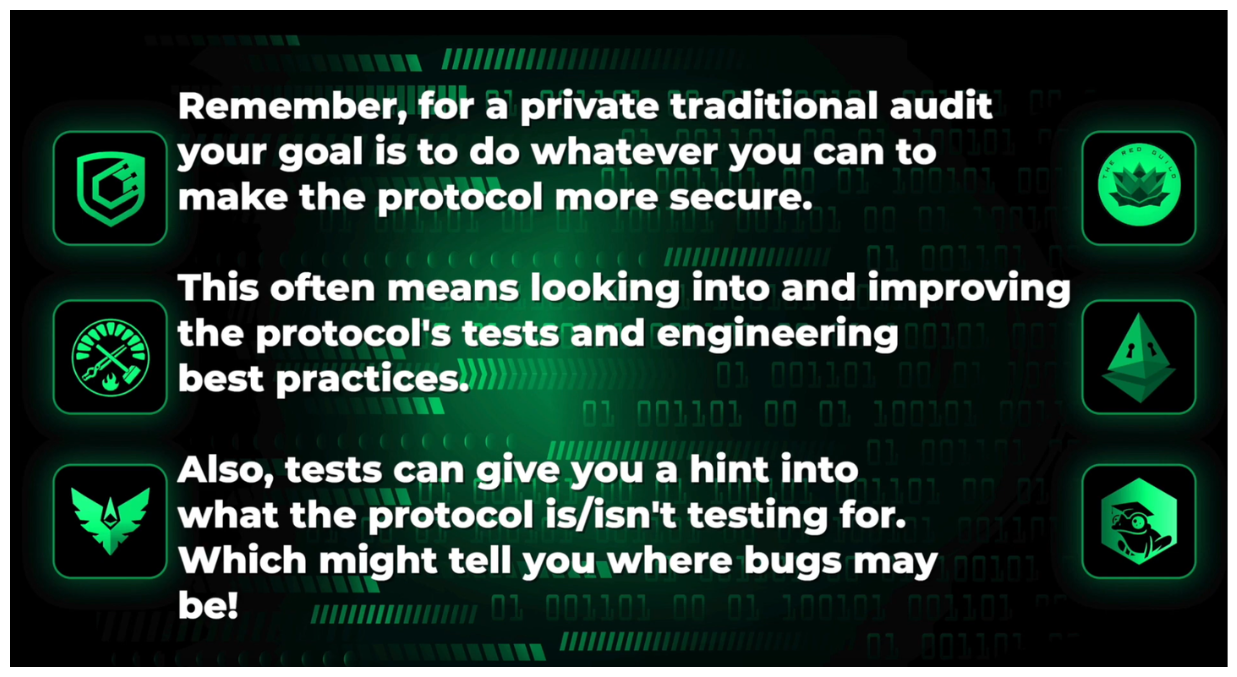_Follow along with this video:_ ---  As security researchers our job is to ultimately do what's necessary to make a protocol more secure. While we've thoroughly examined everything within scope of `PasswordStore` there can be some value in expanding our recon. Test suites should be an expectation of any protocol serious about security, assuring adequate test coverage will be valuable in a `private audit`. ## Testing and Coverage Anyone at this stage of the course should be familiar with how to check the `test coverage` of a repo. ```bash forge build forge test ``` The above will run all current tests, to check `coverage` we'll use: ```bash forge coverage ```  Wow! Our coverage looks great...right? It's important to note that coverage may be a vanity metric and not truly representative of what's being tested for. If we look closely at the tests included, we can see the a major vulnerability we found (`Access Control`) wasn't tested for at all. ```js function test_owner_can_set_password() public { vm.startPrank(owner); string memory expectedPassword = "myNewPassword"; passwordStore.setPassword(expectedPassword); string memory actualPassword = passwordStore.getPassword(); assertEq(actualPassword, expectedPassword); } function test_non_owner_reading_password_reverts() public { vm.startPrank(address(1)); vm.expectRevert(PasswordStore.PasswordStore__NotOwner.selector); passwordStore.getPassword(); } ``` In addition to the above, tests aren't going to catch problems with documentation, or erroneous business logic. It's important not to assume things are fine because our framework tells us so. ### Wrap Up We're really progressing through this process well and we're ready to write a report for each of our findings. We'll cover this in our next lesson!
Follow along with this video:

As security researchers our job is to ultimately do what's necessary to make a protocol more secure. While we've thoroughly examined everything within scope of PasswordStore there can be some value in expanding our recon.
Test suites should be an expectation of any protocol serious about security, assuring adequate test coverage will be valuable in a private audit.
Testing and Coverage
Anyone at this stage of the course should be familiar with how to check the test coverage of a repo.
The above will run all current tests, to check coverage we'll use:

Wow! Our coverage looks great...right? It's important to note that coverage may be a vanity metric and not truly representative of what's being tested for. If we look closely at the tests included, we can see the a major vulnerability we found (Access Control) wasn't tested for at all.
In addition to the above, tests aren't going to catch problems with documentation, or erroneous business logic. It's important not to assume things are fine because our framework tells us so.
Wrap Up
We're really progressing through this process well and we're ready to write a report for each of our findings. We'll cover this in our next lesson!
Protocol Tests
Validating protocol tests and coverage, emphasizing thoroughness!